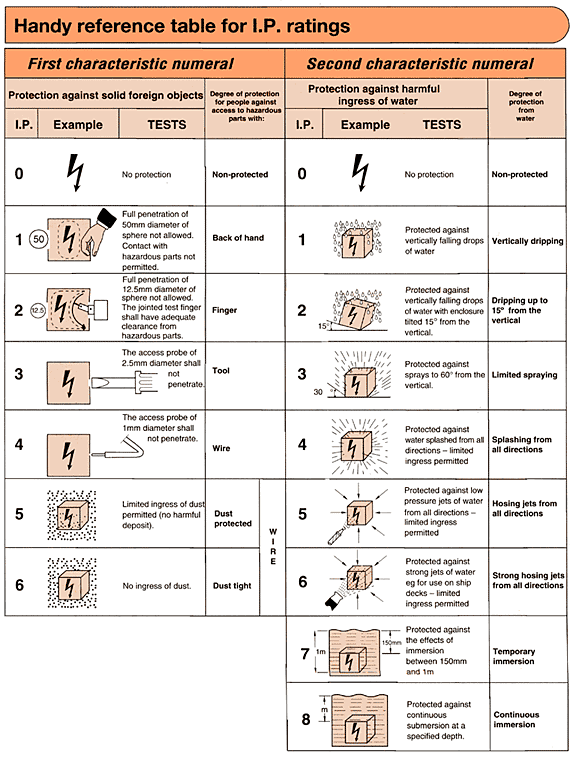

MRO Technical Hub > Technical Reference Online > IP - Ingress protection explained
IP - Ingress protection explained
The IEC standard EN 60529 outlines an international classification system for the sealing effectiveness of enclosures of electrical equipment against the intrusion into the equipment of foreign bodies (i.e. tools, dust, fingers) and moisture. This classification system utilizes the letters "IP" ("Ingress Protection") followed by two or three digits. (A third digit is sometimes used. An "x" is used for one of the digits if there is only one class of protection; i.e. IPX4 which addresses moisture resistance only.)
But what does this mean to the normal industrial user?
In simple terms it means that any equipment that is likely to be outside and subject to the normal British weather would need to be sealed to at least IP44, and equipment that is subject to wash-down procedures or more extreme applications would need to be sealed to at least IP65 - with a strong recommendation that an IP67 sealed enclosure or product is selected.
Examples of products that feature IP ratings are:

A common way to protect products against dust and water in harsh environments is to use an IP rated enclosure. This will protect the equipment inside, and has the benefit of allowing panel display, pushbuttons, and other controls to be mounted on the front of the enclosure.
Often products only achieve the listed IP rating when correctly mounted on a panel, and even then it is only the face or front of the product that is protected. The following chart is a handy guide to IP ratings and will help you select the right IP level for your application.



